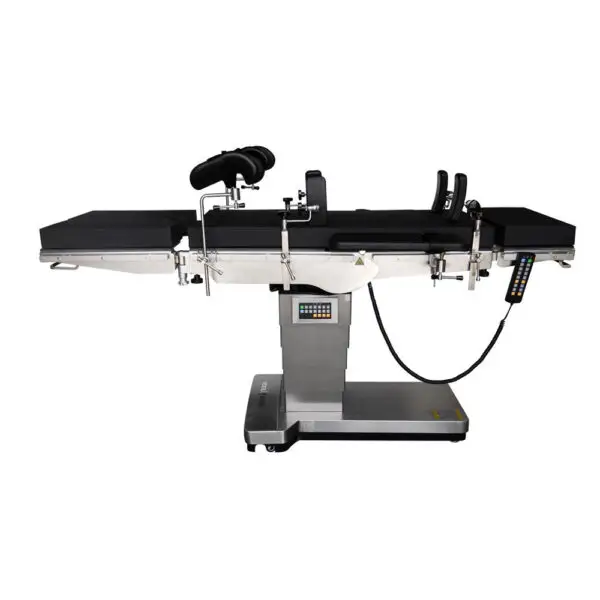Адрес
304 North Cardinal St.
Дорчестер-центр, Массачусетс 02124
Часы работы
С понедельника по пятницу: с 7:00 до 19:00.
Выходные: 10.00 - 17.00

В сложном танце хирургии каждый элемент играет жизненно важную роль в обеспечении наилучших возможных результатов для пациентов. Одним из таких часто упускаемых из виду, но основополагающих компонентов является операционный стол. Операционные столы — это не просто предметы мебели, а сложные инструменты, предназначенные для облегчения хирургических процедур. Понимание их влияния на результаты хирургических операций имеет решающее значение для оптимизации ухода за пациентами и безопасности.
Operating room tables have come a long way since their inception. From basic platforms to highly specialized, ergonomic structures, their evolution parallels advancements in surgical techniques and technologies. Early tables provided basic support, but modern versions offer a myriad of features tailored to different surgical specialties and patient needs.
The design and functionality of operating room tables directly influence surgical precision, efficiency, and patient comfort. Key features such as adjustable height, tilt, and lateral tilt enable surgeons to optimize positioning for better access to surgical sites. Moreover, specialized attachments and accessories accommodate various surgical procedures, from orthopedic surgeries to neurosurgery.
Efficient surgical workflow hinges on seamless coordination between surgical teams and equipment. Operating room play a pivotal role in this process by providing stable and adaptable platforms for surgical instruments and patient positioning. A well-designed table can reduce procedure time, minimize intraoperative complications, and enhance overall surgical efficiency.
Patient safety and comfort are paramount in surgical settings. Operating room tables contribute significantly to both aspects by ensuring stable positioning, minimizing pressure points, and accommodating patients of diverse anatomies. Advanced features like pressure redistribution surfaces and padding further enhance patient comfort and reduce the risk of perioperative complications.

To illustrate the tangible impact of operating room tables on surgical outcomes, let’s delve into a few case studies. These examples highlight how the choice of table and its features can influence the success of different surgical procedures, ranging from cardiovascular interventions to minimally invasive surgeries.
| Пример исследования | Хирургическая специальность | Key Findings |
|---|---|---|
| Case 1 | Ортопедическая хирургия | Improved access to surgical site and reduced intraoperative complications with specialized table attachments. |
| Case 2 | Нейрохирургия | Enhanced patient safety and comfort during prolonged procedures with adjustable positioning and pressure redistribution features. |
| Case 3 | Laparoscopic Surgery | Increased efficiency and reduced surgeon fatigue with ergonomic table design and integrated instrument trays. |
Операционные столы are indispensable assets in modern surgical practice, exerting a profound influence on patient outcomes, surgical workflow, and overall efficiency. By investing in advanced tables equipped with tailored features, healthcare facilities can optimize surgical processes, enhance patient safety, and ultimately improve the quality of care.
What are the essential features to look for in an операционный стол?
How often should operating room tables be serviced and maintained?
Может операционные столы accommodate patients of all sizes and anatomies?
Are there any special considerations for pediatric or bariatric patients?
Как операционные столы contribute to infection control in surgical environments?
